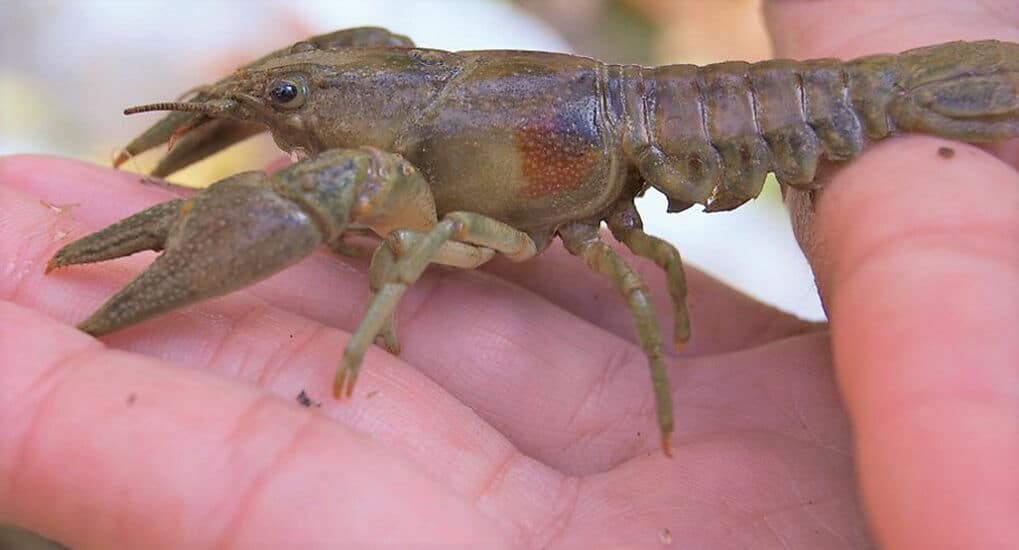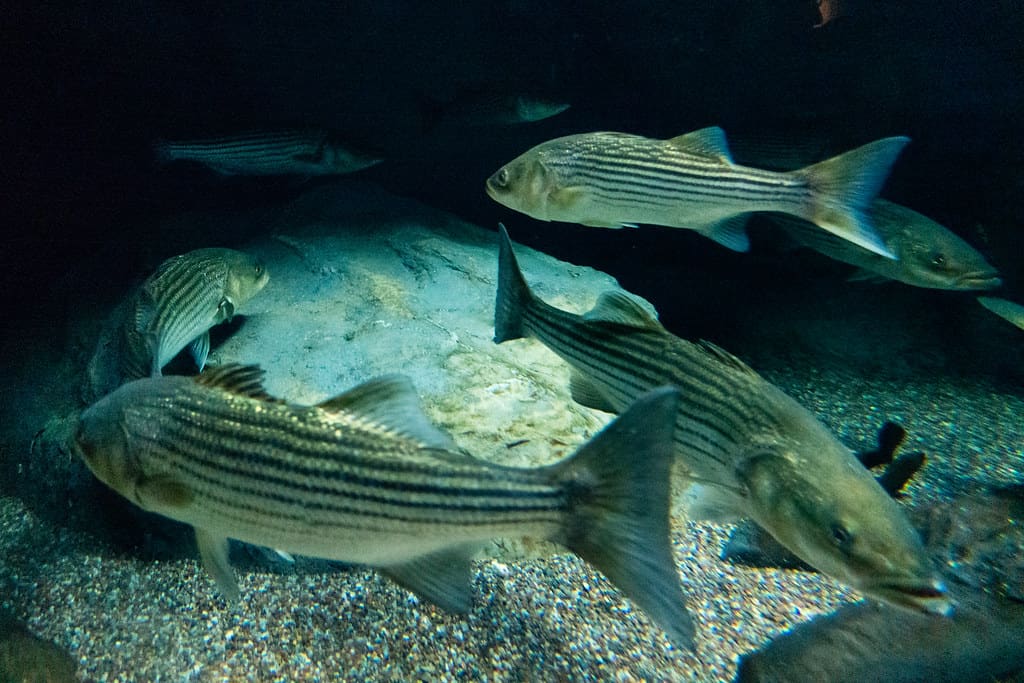By Ad Crable, Bay Journal News Service
Crawdad, crawfish, crayfish. No matter what you call the crustaceans, the rusty crayfish, an interloper from the Ohio River watershed, has become one of the most destructive invasive species in the streams and rivers of Chesapeake Bay states.
It has been introduced mainly by anglers who use the rusty crayfish for bait and dump extras into streams. But the rusty crayfish has also reached the Bay watershed by way of aquarium lovers, aquaculture and even school classrooms.
The presence of these large, abnormally aggressive crayfish with large pincers and an indiscriminating appetite continues to expand, crowding out native crayfish and destroying underwater vegetation.
The rusty crayfish has been found in Maryland since 2007, Virginia since 2011, Pennsylvania since 1976, West Virginia since 1977, and New York since 1978. Both the Susquehanna and Potomac rivers have major infestations. It has not been found in the portion of Delaware that drains into the Bay.
Fish species have declined in many spots in Midwest states where the invasion began about 20 years earlier, as the crayfish consume fish eggs and destroy habitat. The crayfish is only native to parts of Ohio, Kentucky and Indiana in the Ohio River drainage.
Frustrating fishery managers, there is apparently no way to beat back the hordes. The use of chemicals would destroy any remaining native crayfish.
“Across the board, the idea is once they’re in, you’ve lost the battle. The focus is on preventing them from getting there,” said Jay Kilian, a biologist with the Maryland Department of Natural Resources.
So fishery agencies have been forced to adopt a stop-the-spread fight. That translates into educating the public about the problem with the aim of preventing new waterways from becoming infested. In addition, most states have banned the sale and possession of rusty crayfish.
The threat is not overblown. In Maryland, which has nine native species of crayfish, the rusty is now the second-most prevalent crayfish, second only to virile crayfish, another invasive crayfish. In the mainstem of the Susquehanna, Pennsylvania’s largest river, the rusty has completely booted out native crayfish that provide food for a variety of land and underwater predators, as well as creating tunnels that are needed by insects for habitat.
Added Kilian, “They are so good at overtaking native crayfish because they can just swamp a system. If you go into a stream and as you are walking you see crayfish move, you’re walking in a stream that has been invaded by rusty crayfish.”
The rusty is certainly built for takeover. About twice the size of many native crayfish, it grows to about 4 inches. Its pincers are large compared to its body size, giving rise to the nickname “little bronze lobster.” Those menacing claws allow them to kick out small crayfish from hiding places and outcompete them for food, which they eat at about twice the volume of native crayfish. Also, once fully grown, the feisty crayfish can ward off bass and other fish, thus removing a key link in the food chain.
Like other crayfish, the rusty will eat nearly any plant or small animal, dead or alive. By eating algae, underwater vegetation, aquatic insects and fish eggs, crayfish are important movers of energy up the food chain, as they are eaten by predators on both land and under water.
But with a higher metabolism, rusty crayfish eat much more than native crayfish. In the case of aquatic vegetation, they pull up vast amounts by the roots, killing the plant. Entire sections of streams can become devoid of aquatic plants, reducing erosion control and robbing smaller game fish of needed shelter and food, and inviting invasive plants to take over.
“We have this pretty large crayfish, and my question is how much energy are they taking that can’t grow other critters?” said George Merovich, an aquatic ecologist and associate professor at Juniata College in Pennsylvania, who has been studying the impacts of rusty crayfish in the upper Juniata River, a major tributary of the Susquehanna.
There has been some talk about plucking rusties from infested waterways and encouraging the public to develop a taste for them, holding “crawfish boils” that are so popular in the South. But restrictions would have to be changed and markets developed. Quips Kilian, “When you eat crustaceans in Maryland, it’s not crawdads.”
Despite the ominous spread of rusty crayfish, there is some hope among wildlife managers. A majority of the waterways in each state are still free of the invaders. With increased bans and public awareness of the dangers of nonnative crayfish, there is an expectation that further introductions by humans are less likely than they were a decade ago.
“There is hope. We just need to not move rusty crayfish around,” Lieb said.
And Kilian has one simple suggestion, aimed at anglers: “Don’t dump your bait.”
You can read this story in full at bayjournal.com.




